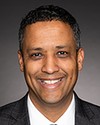Right, thank you.
We have started to receive memos, some of which are not redacted. The much discussed group or committee composed of the Prime Minister and certain members of Cabinet was receiving reports on the events. I am going to quote what the Minister of Public Safety said at a meeting with the Prime Minister on February 12.
In Ottawa, the commissioner of the RCMP reported having a meeting with the OPS chief and OPP commissioner. There were approximately 350 protesters on Parliament Hill and 400 on Wellington Street.
The Minister of Public Safety has been quoted as indicating, “There appears to be a lack of a plan in Ottawa, with the Chief of Ottawa Police Service having yet to approve the plan developed with the RCMP and OPP.” During the discussion, “confirmation was obtained that the OPS chief of police accepted the plan”, and the commissioner of the RCMP agreed to be able to provide additional details of the plan in the next call.
That suggests that you did not have a plan and that the plan you ultimately accepted was the one presented by the RCMP and the Ontario Provincial Police. That surprised me.
That committee meeting, where the Prime Minister was present, took place on February 12. On that date, you had already announced on the OPS website that you had a plan to clear the area. Was this your plan, the RCMP's plan, or a combination of the two?

